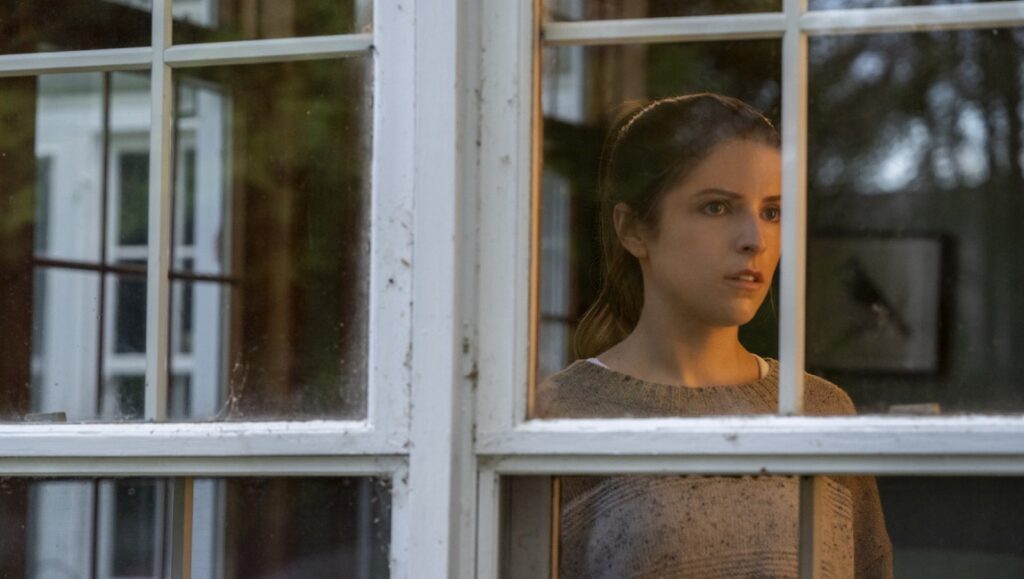A rare dramatic turn from Anna Kendrick, Alice, Darling surprises with its nuanced, twitchy lead performance. Alice (Kendrick) chooses to lie to her emotionally abusive boyfriend Simon (Charlie Connick) over a cottage vacation with her two best friends, and the trip itself is a somewhat plotless study of both demeaned neurosis and the complexities of female friendship. Alice’s two friends both notice her behavior when her boyfriend texts, as his emotionally needy insults and manipulation bleed into what was supposed to be a peaceful outing; instead of a perfectly trauma-informed response to a friend’s destructive relationship, however, they argue. The three women are messy and realistic, from pushy Tess (Kaniehtiio Horn) to Sophie (Wunmi Mosaku), who initially asserts that the couple are both adults and that Alice would say if something were wrong. There is, of course, Alice, whose fraught partnership has slowly stripped her of any personality or interests. Alice spends most of her time posing for cleavage pics to sext, starving herself slowly, and generally bending to Simon’s whims. Though some of the clumsier group dynamics among the three women seem authentic, their interpersonal distance mirrors an equal emotional disengagement from the narrative. We’re told that these three have been best friends since childhood, but unlike with the couple’s relationship, we’re rarely shown this early on.
Simon’s control is, for the most part, demonstrated through patterns of behavior. Rather than flaunt the most heightened moments of conflict, the camera instead favors an out-of-focus Alice reacting to what would individually have been benign messages. Alanna Francis’ screenplay presupposes an abusive context; rather than isolating individual moments to be judged, these interactions are situated within the environs of a toxic relationship and assumed to come from an emotionally cruel place. This allows Alice, Darling to focus on the aftereffects of Simon’s behavior and how this changes the way Alice interacts with the rest of the world around her, rather than devoting its runtime to a trial of whether or not the couple’s relationship is healthy. We know from the start that it’s not; instead the short runtime dedicates itself to the minutiae of human interaction under emotional surveillance. Behavioral repetition, like multiple requests for lewds, or the constant messages asking Alice to come home because Simon is more important than work or friends, help to signify the longer-term pattern in the couple’s relationship without having to state outright what is happening.
Unfortunately, Kendrick’s impressive and restrained central performance is bogged down by a barrage of clichés. From the symbolic “psychological drowning” underwater shot, to a half-eaten down-the-rabbit-hole metaphor for Alice’s trauma-induced behavior, these student film calling-cards take the place of any more individualistic attempts at style. The film itself becomes like Simon’s ideal for Alice — overly polished, down to the mellow score, and designed to an algorithmic fault, to the extent that it’s devoid of visual quirks. It’s not that Alice, Darling has flaws in its technical craft; the issue is that it chases “woman under the influence” psychodrama tropes a decade too late rather than suit its shallow metaphors to the story at hand. This isn’t helped by the marketing as a taut psychological thriller, where the closest element to the genre in a traditional sense is a red herring news story about a missing girl, a deceptive marketing ploy for what is, on its own, a decently acted drama.
Though the specificity of Alice’s panic is quite impressive (in particular, a habit of wrapping strands of hair around her fingertips, pulling tight until it stings), the progression of this narrative falls flat, tension never peaking beyond the moment when Simon first appears in the countryside. The other girls notice Alice’s behavior most when it pertains to absence — such as avoiding sugar or disappearing into a corner to keep her man busy. Yet these actions are drowned out by the equal minimalism in the dialogue, which grows stilted and almost painful. Kendrick’s flitting eyes and careful, delicate movements are phenomenal to witness in silence, but the need for formal narrative and lethargic conversation distracts from the raw physicality. This leaves Kendrick — though her supporting cast does well with what they’re given too — with a great performance marooned, her film doomed to a late-year qualifying run, and little else.
Published as part of InRO Weekly — Volume 1, Issue 3.


Comments are closed.